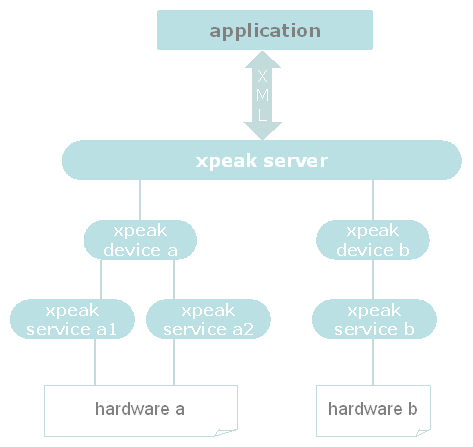|
|
An Xpeak solution comprises the following components:
ServicesA Service corresponds to a part of the device for which an Xpeak definition exists. That is to say that it is the same as a XFS Service Provider or a J/XFS Device Service. A Service can be something as simple as a printer led indicator or as complex as a cash recycling unit. DevicesA Device is a combination of Services. For example, a PinPad could be a Device with the following Services:
A Device may also contain a single Service, as would be the case for journal printers or bar code readers, for example. ServerThe server is the point of connection between the application and the devices. It is at this level where the channel of communication is defined. The Server tasks are the following ones:
The Server may be an application executed by one of the workstations (or by all of them, depending on the typology designed) or it may be a piece of software running within the periphery itself (Native Xpeak Devices). An application may connect to Servers running within the workstation itself (there can even be more than one); Servers that run within the peripheral hardware or Servers running in other workstations (for the sharing of devices between workstations). |


